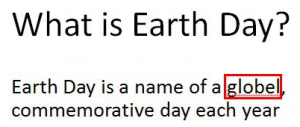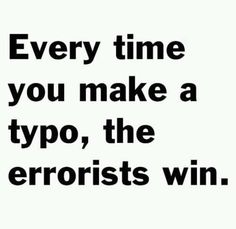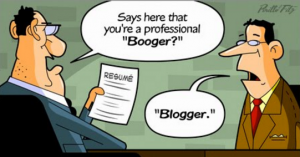Master Your Email Etiquette with These 7 Easy Steps

Gentlemen, we are all highly trained at using our phones, tablets, computers, and every other communication tool on earth. Where we lack skill is in the etiquette column. Think of it like proper utensil etiquette when eating (don’t worry, there’s another post coming for that topic).
 We all know how to use a knife and fork to get food cut and put into our mouths. The number of humans that know how to properly do it with the correct etiquette is diminishing pretty rapidly however. C’mon guys, are you still holding your fork with a closed, clenched fist? You’re not a four year old. You can do this.
We all know how to use a knife and fork to get food cut and put into our mouths. The number of humans that know how to properly do it with the correct etiquette is diminishing pretty rapidly however. C’mon guys, are you still holding your fork with a closed, clenched fist? You’re not a four year old. You can do this.
The same issue arises in our communication. Just because we all know how to use our devices to communicate, doesn’t mean we know how to do it well. Whether it’s for a prospective job, client, or project or just a friendly email to associates, friends, or family, there’s a way to do it so you don’t look like you’re still struggling through 9th grade English. Master your email etiquette with these 7 easy steps.
1. Spellcheck.
This really shouldn’t have to be said, but let’s get it out of the way right. Check the spelling of your email content before you click send. There are a few things that make it easy for you:
- Modern email programs/providers DO IT RIGHT THERE AS YOU TYPE.
- The little red squiggle under that word means IT IS SPELLED INCORRECTLY.
 I almost wish this was more difficult so there would be a better reason for incorrect spelling, but modern software makes it pretty tough to get away with not knowing something is spelled wrong. Every time you hit send, you’re sharing who you are and what you know with someone else. If your message has spelling errors, it shares that perhaps maybe you’re not putting your best foot forward. Don’t be that guy. Use spellcheck.
I almost wish this was more difficult so there would be a better reason for incorrect spelling, but modern software makes it pretty tough to get away with not knowing something is spelled wrong. Every time you hit send, you’re sharing who you are and what you know with someone else. If your message has spelling errors, it shares that perhaps maybe you’re not putting your best foot forward. Don’t be that guy. Use spellcheck.
2. Capitalize & Grammar
Right up there with spelling, capitalizing and grammar are paramount for proper email communication. Sure, you may forget to capitalize occasionally or use the wrong punctuation mark, but that doesn’t mean you make a habit of it, right? Hell no, you don’t.
- Capitalize the first word when you begin a sentence.
- Don’t be lazy: use apostrophes in your contractions (don’t, won’t, can’t etc.)
- Understand the differences between your and you’re
- Understand the difference between there, their, and they’re
 Look, when we all had semi-smart phones at the dawn of texting, T9 or triple-tap methods had us making shortcuts for words because we didn’t want to spend the time to spell out the full word. Once the Blackberry and Sidekick hit the scene, we could type out the full words and it would automatically add the correct punctuation for us. How we somehow still manage to spell things wrong and skip capitals and punctuation with all the smart tools we have available boggles my mind.
Look, when we all had semi-smart phones at the dawn of texting, T9 or triple-tap methods had us making shortcuts for words because we didn’t want to spend the time to spell out the full word. Once the Blackberry and Sidekick hit the scene, we could type out the full words and it would automatically add the correct punctuation for us. How we somehow still manage to spell things wrong and skip capitals and punctuation with all the smart tools we have available boggles my mind.
Remember, you’re training people how to treat you in everything you do. This includes email communication. When you send emails that look like they’ve been written by a 10 year old, the recipient may begin to regard you as having the intelligence of a 10 year old. You can do better. I believe in you.
3. Avoid large blocks of uninterrupted text
Have you ever noticed that most decent websites and emails are written in smaller chunks of text? Rather than give you all the information you need in one continuous text box, it’s broken up into smaller, easier to digest parts. It keeps the reader interested and helps make the content flow much more easily.
I’m sure you’ve also opened an email or website and seen what looks like 30 millions words all blocked together in one giant paragraph, and thought to yourself, “oh hell no. I’m not reading all that.” That’s exactly the point. If you wouldn’t read all of it, don’t expect someone else to. Break it up. Your recipients will thank you for it.
4. Keep it clear and concise
 One of the ways to master your email etiquette is to keep your message clear and concise. You’re writing this email for a reason, right? Open with your salutation and such, but then move directly into the point of your email. As a man that receives no less than a hundred emails every day, I greatly appreciate those that keep the purpose front and center.
One of the ways to master your email etiquette is to keep your message clear and concise. You’re writing this email for a reason, right? Open with your salutation and such, but then move directly into the point of your email. As a man that receives no less than a hundred emails every day, I greatly appreciate those that keep the purpose front and center.
As much as I like the sentiment and story in some emails, I simply don’t have time to go through it all. Frequently, I will see there’s a lot of content in the email and will elect to “get back to it later” – which essentially means I’ll forget about it until that person emails me again. If you ever email someone and never get a response, it may be due to long-winded, or unclear content. Keep it clear and concise and you’ll see a dramatic improvement in engagement and responses.
5. Don’t mix business & pleasure
This is truly its own topic, but when it comes to email communication, it’s best to keep professional and personal messages separate. Most of the time, email is a fairly impersonal medium that works great for professional messages and not personal info. Look at what happens when corporate emails are leaked. All the personal messages are revealed and it’s usually embarrassing. If there’s a sentence or topic you wouldn’t share with your boss, don’t put it in your email. Those are conversations better suited for face-to-face or phone calls.
6. Avoid Emoticons and Abbreviations
Abbreviations and emoticons aren’t necessary in email. You have plenty of space to spell out the complete word, and emoticons lend themselves to a younger, more socially conscious medium like Instagram, twitter, or Facebook. In most circumstances, abbreviations in this context mean purposely shortened words into improper form. Here’s an example of what are acceptable abbreviations, and others that are not:
- Acceptable: Apartment (apt.) / Appointment (appt.) / Etcetera (etc.) / Boulevard (blvd.)
- Unacceptable: (ur)(2)(4)(lol) – “ur 2 cool 4 school, blake!!!! lol” (also, don’t use more than one exclamation mark)
7. Proofread it every single time
 This is probably the more important tip when you’re looking to master your email etiquette. Read over everything you’ve just written for any errors in spelling, grammar, or poor readability. One of my biggest personal faults when writing is I decide to change a sentence while in the middle of writing it. Sometimes this leads to random words with no rhyme or reason for being there.
This is probably the more important tip when you’re looking to master your email etiquette. Read over everything you’ve just written for any errors in spelling, grammar, or poor readability. One of my biggest personal faults when writing is I decide to change a sentence while in the middle of writing it. Sometimes this leads to random words with no rhyme or reason for being there.
Simply reading over everything from start to finish to make it sounds right, reads well, and doesn’t have any spelling or grammatical errors will save you time and frustration later. You’re teaching the world about you every time you communicate. Take a few extra moments to make sure you’re teaching the right things about yourself.
Look, it sucks to not get a response from a potential client, job, or romantic interest, right? It sucks so much worse to learn you didn’t get a response because your email made you sound uneducated. Master your email etiquette with these 7 easy steps and you’ll find a lot more wins than losses, I promise you.
Do you think your email etiquette is acceptable?
What is your biggest pet-peeve in email? Are there any other rules you would add?
Leave a comment below and let me know!




